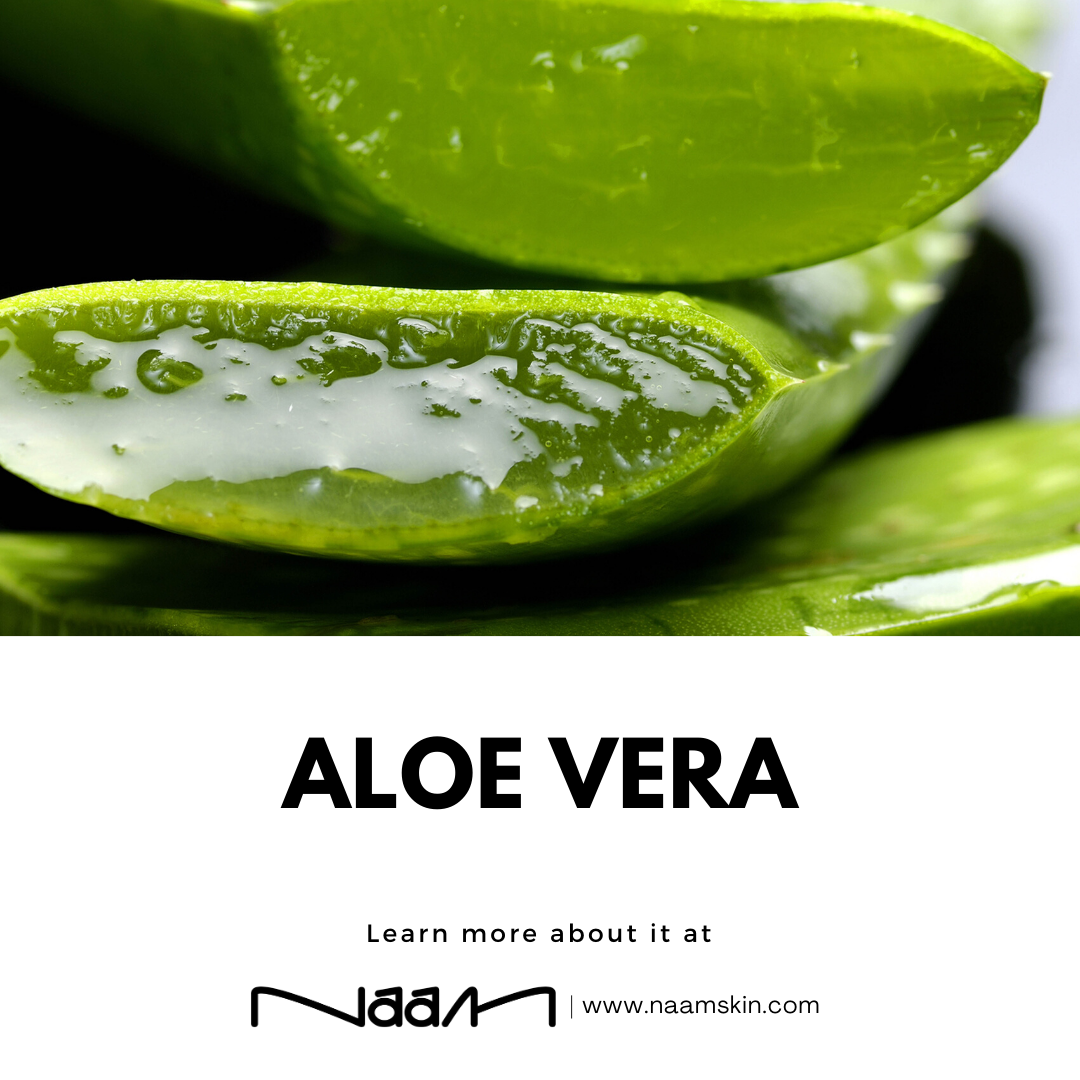Aloe Vera
Aloe vera’s use can be traced back 6,000 years to early Egypt, where the plant was depicted on stone carvings. Known as the “plant of immortality,” aloe was presented as a funeral gift to pharaohs. Historically, aloe vera has been used for a variety of purposes, including treatment of wounds, hair loss, and hemorrhoids; it has also been used as a laxative.
Two substances from aloe vera, the clear gel and the yellow latex, are used in health products today. Aloe gel is primarily used topically (applied to the skin) as a remedy for skin conditions such as burns, frostbite, psoriasis, and cold sores, but it may also be taken orally (by mouth) for conditions including osteoarthritis, bowel diseases, and fever. Aloe latex is taken orally, usually for constipation
Benefits of Aloe Vera
1) Healing Properties
Glucomannan, a mannose-rich polysaccharide, and gibberellin, a growth hormone, interacts with growth factor receptors on the fibroblast, thereby stimulating its activity and proliferation, which in turn significantly increases collagen synthesis after topical and oral Aloe vera. Aloe gel not only increased collagen content of the wound but also changed collagen composition (more type III) and increased the degree of collagen cross linking. Due to this, it accelerated wound contraction and increased the breaking strength of resulting scar tissue. An increased synthesis of hyaluronic acid and dermatan sulfate in the granulation tissue of a healing wound following oral or topical treatment has been reported.
2) Effects On Skin Exposure to UV and Gamma Radiation
Aloe vera gel has been reported to have a protective effect against radiation damage to the skin. Exact role is not known, but following the administration of aloe vera gel, an antioxidant protein, metallothionein, is generated in the skin, which scavenges hydroxyl radicals and prevents suppression of superoxide dismutase and glutathione peroxidase in the skin. It reduces the production and release of skin keratinocyte-derived immunosuppressive cytokines such as interleukin-10 (IL-10) and hence prevents UV-induced suppression of delayed type hypersensitivity.
3) Anti-inflammatory Action
Aloe vera inhibits the cyclooxygenase pathway and reduces prostaglandin E2 production from arachidonic acid. Recently, the novel anti-inflammatory compound called C-glucosyl chromone was isolated from gel extracts.
4) Effects on The Immune System
Alprogen inhibit calcium influx into mast cells, thereby inhibiting the antigen-antibody-mediated release of histamine and leukotriene from mast cells. In a study on mice that had previously been implanted with murine sarcoma cells, acemannan stimulates the synthesis and release of interleukin-1 (IL-1) and tumor necrosis factor from macrophages in mice, which in turn initiated an immune attack that resulted in necrosis and regression of the cancerous cells. Several low-molecular-weight compounds are also capable of inhibiting the release of reactive oxygen free radicals from activated human neutrophils.
5) Laxative Effects
Anthraquinones present in latex are a potent laxative. It increases intestinal water content, stimulates mucus secretion and increases intestinal peristalsis.
6) Antiviral and Antitumor Activity
These actions may be due to indirect or direct effects. Indirect effect is due to stimulation of the immune system and direct effect is due to anthraquinones. The anthraquinone aloin inactivates various enveloped viruses such as herpes simplex, varicella zoster and influenza. In recent studies, a polysaccharide fraction has shown to inhibit the binding of benzopyrene to primary rat hepatocytes, thereby preventing the formation of potentially cancer-initiating benzopyrene-DNA adducts. An induction of glutathione S-transferase and an inhibition of the tumor-promoting effects of phorbol myristic acetate has also been reported which suggest a possible benefit of using aloe gel in cancer chemoprevention.
7) Moisturizing And Anti-aging Effect
Mucopolysaccharides help in binding moisture into the skin. Aloe stimulates fibroblast which produces the collagen and elastin fibers making the skin more elastic and less wrinkled. It also has cohesive effects on the superficial flaking epidermal cells by sticking them together, which softens the skin. The amino acids also soften hardened skin cells and zinc acts as an astringent to tighten pores. Its moisturizing effects has also been studied in treatment of dry skin associated with occupational exposure where aloe vera gel gloves improved the skin integrity, decreases appearance of fine wrinkle and decreases erythema. It also has anti-acne effect.
8) Antiseptic Effect
Aloe vera contains 6 antiseptic agents: Lupeol, salicylic acid, urea nitrogen, cinnamonic acid, phenols and sulfur. They all have inhibitory action on fungi, bacteria and viruses.

